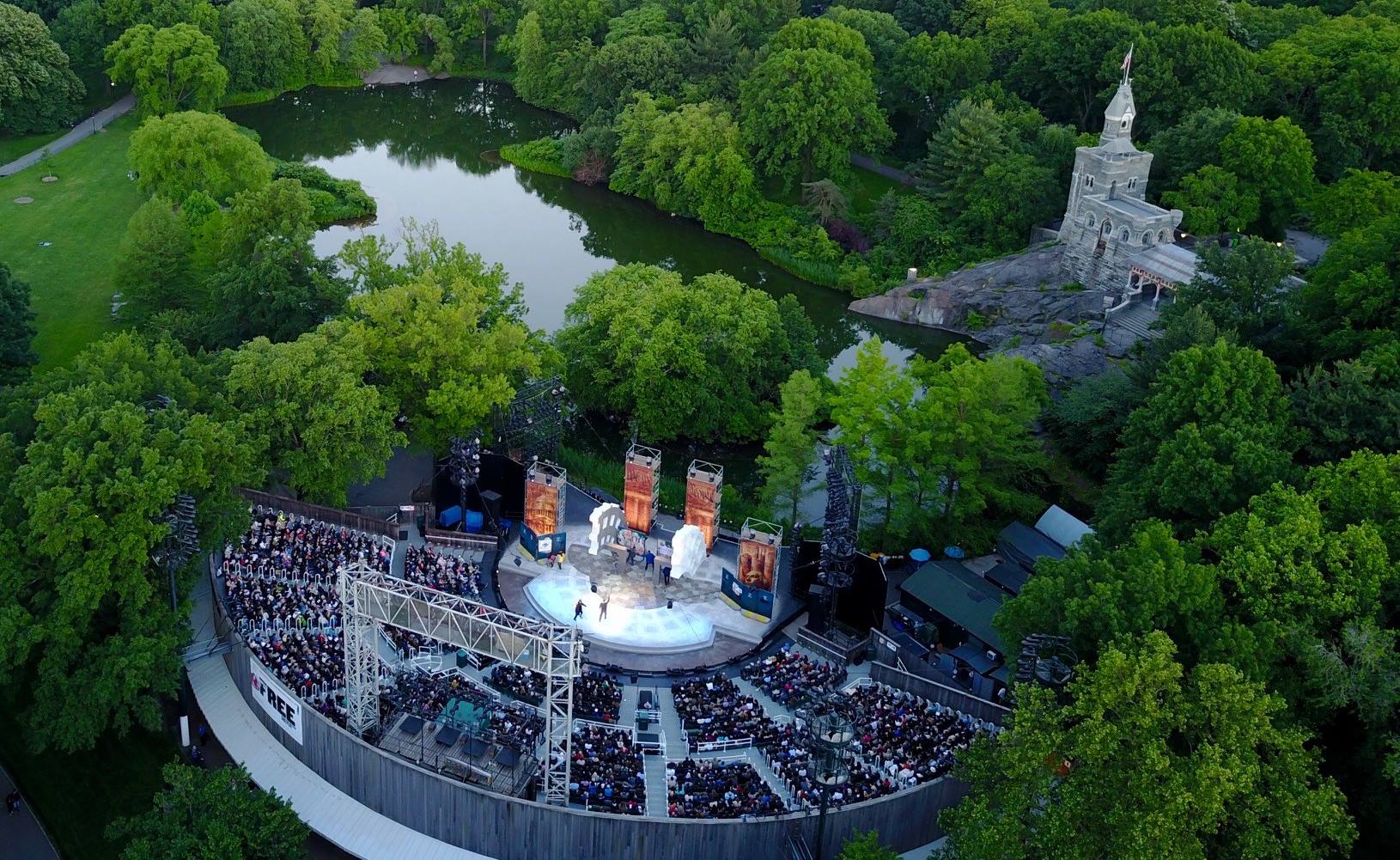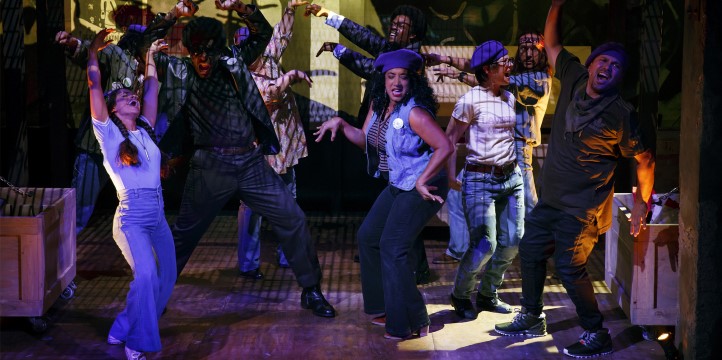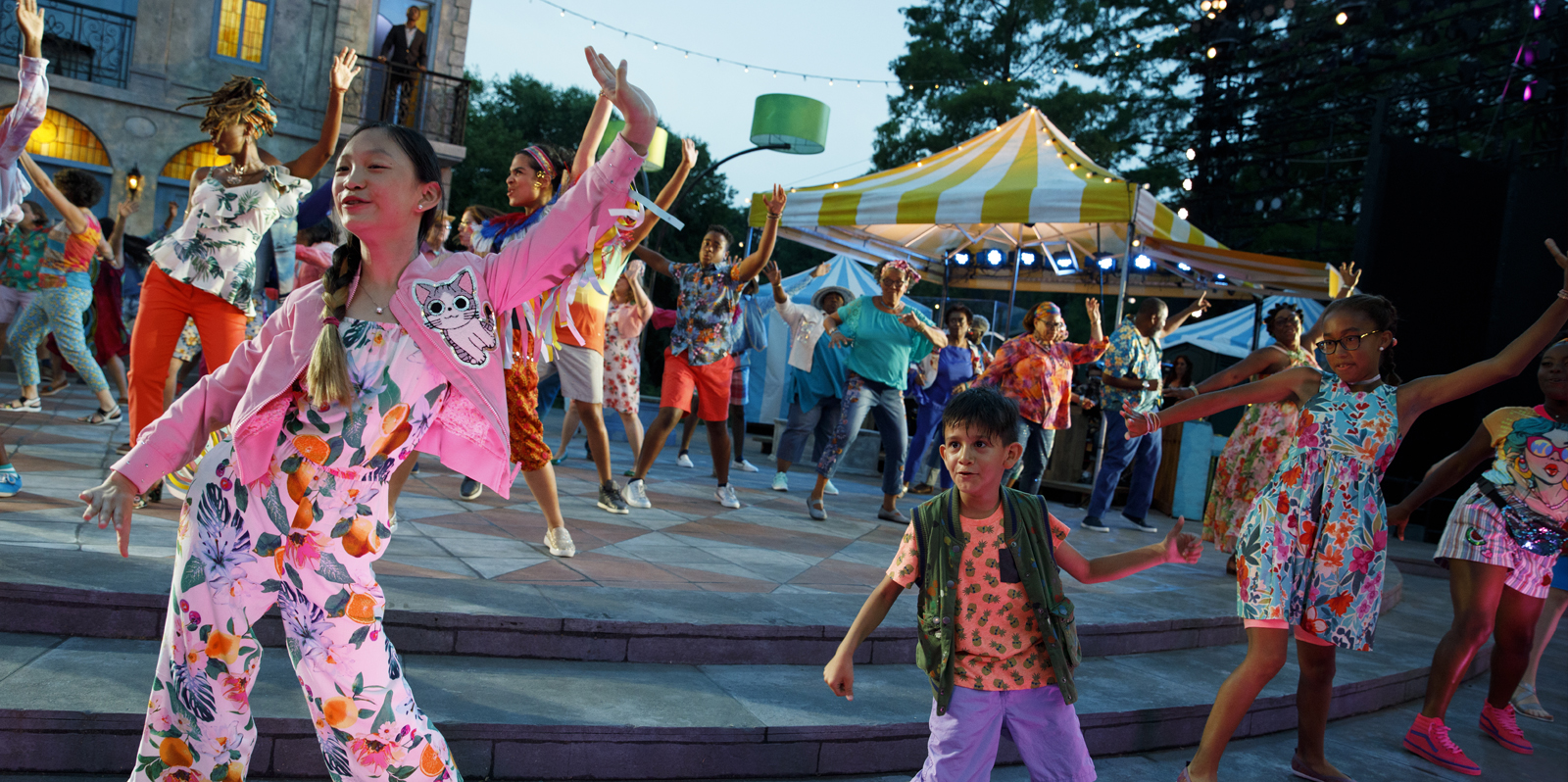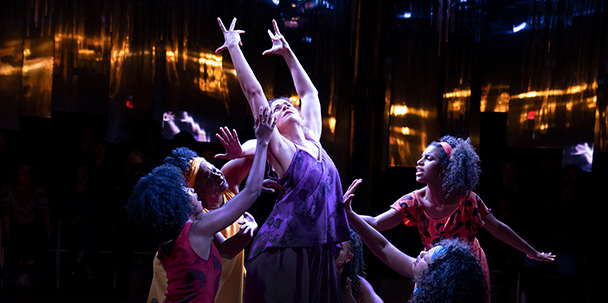“All of [the plays] did have this sense of waiting for something,” she explained. “There was this anticipation in each of them. I don't know what they were waiting for, but from there, I had this thought of, ‘Oh, maybe it could be this ethereal waiting room, or like this liminal space.’”
Understanding their budget and inspired by the lighting works of installation artist Robert W. Irwin, Nishikawa and Behjat played around with the idea of translucent fabrics that, when manipulated with the proper lighting, could have the potential for a lot of transformation.
“It wasn't really thinking about each monologue,” Nishikawa said when asked about what the process was like for capturing the design of each play. “It was more of, ‘Let's try to find a container where all of these can live in with simple gestures that change that environment.’”
Behjat added, “All of them exist in one cohesive world, but they each have a little bit of specificity, so we started brainstorming a bit on how we can transform this space with one unified material and their configuration can create a different world for each play.”
Once sold on Irwin’s idea of the way lighting can change and transform different fabrics, Nishikawa and Behjat began experimenting. Removing a light here, moving a light from the top to behind, magically making a person appear or disappear from in front or behind the fabric. Their collective process included several recommended fabrics, fighting the urge to fill up the deep space, and creating a flexible lighting system as they bring their design to life on stage.
“Our design concept doesn't necessarily follow the story of each piece,” said Behjat. “Our take is more conceptual and the design elements that we have are more like an emotional response to the piece.”
Nishikawa was immediately intrigued when Waters and NAATCO Actor-Manager and Co-Founder Mia Katigbak first shared their idea of creating a piece for older Asian-American actors.
“[Les Waters] was just sick of seeing older actors in the corner of a stage falling asleep next to a samovar,” Nishikawa said, laughing at the image. “I was like, ‘Yeah, you're right. Older bodies are beautiful too.’ And so how we can help that was really my focus.”
As for Behjat, when it came to working on this particular production where the dialogue sits center stage, he recognized dialing back the creative is perfectly acceptable.
“Of course people come to watch this visual world we created, but I think listening to [the characters] is more important,” said Behjat. “I think their story, their voice in the theater, hopefully in a post-pandemic era – that's more important for me.”
OUT OF TIME is in performances now and will run at The Public Theater through Sunday, March 13.
Kathlynn Alba is a pop culture fiend, full-time brand strategist, and podcaster on sabbatical. Keep up with her talk about all three of these things and more on Twitter @kathlynnalba_
This piece was developed with the BIPOC Critics Lab, a new program founded by Jose Solís training the next generation of BIPOC journalists. Follow on Twitter: @BIPOCCriticsLab.
PICTURED ABOVE: Model of the OUT OF TIME set by Kimie Nishikawa; Photo by Kimie Nishikawa
PICTURED BELOW: Mia Katigbak in OUT OF TIME; Photo by Joan Marcus













